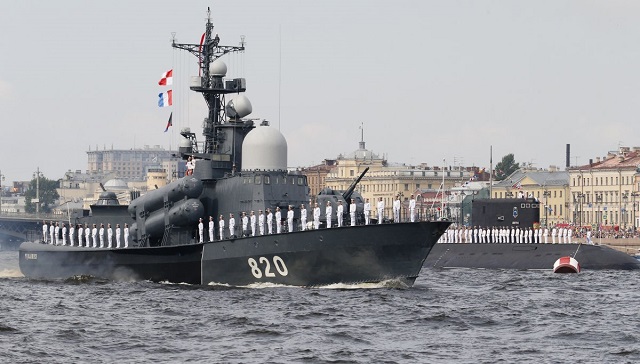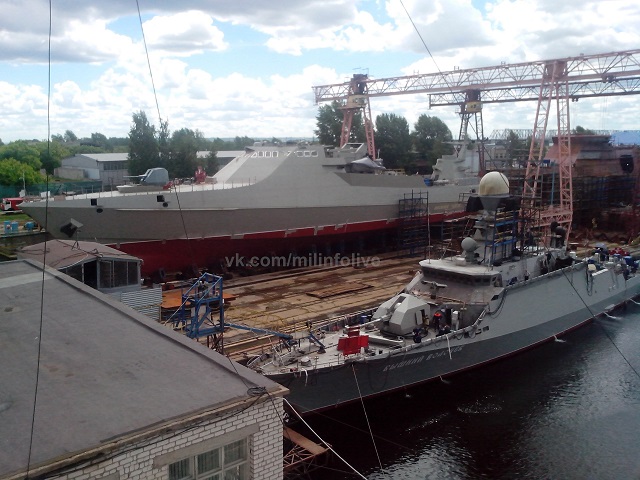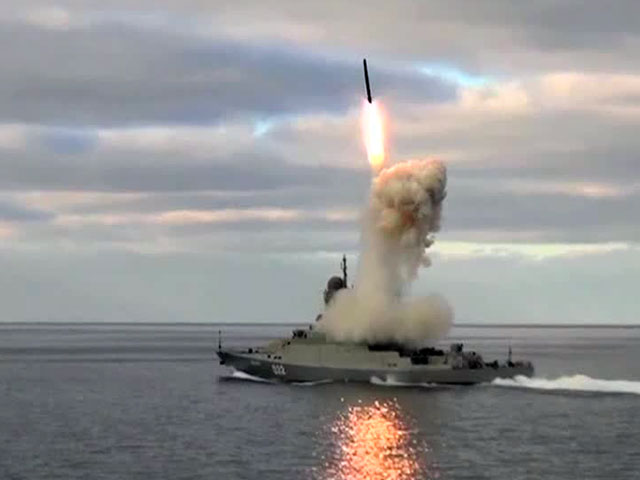|
|
|||
 On July 30, 2017, for the first time in the latest Russian history a grandiose naval parade was held in St. Petersburg, Kronshtadt, Severomorsk, Vladivostok, Sevastopol and Baltiisk. Alexandr Zemlianichenko picture. On July 30, 2017, for the first time in the latest Russian history a grandiose naval parade was held in St. Petersburg, Kronshtadt, Severomorsk, Vladivostok, Sevastopol and Baltiisk. Alexandr Zemlianichenko picture. |
|||
|
On July 30, 2017, for the first time in the latest Russian history a grandiose naval parade was held in St. Petersburg, Kronshtadt, Severomorsk, Vladivostok, Sevastopol and Baltiisk. It demonstrated to the Russian public that we have not just a fleet, but oceanic navy which we can be proud of. On October 6, Defense Minister Sergei Shoigu told top military brass that "strengthening the navy might is a priority of the Russian military policy." On October 9, Deputy Prime Minister Dmitry Rogozin told the Maritime Collegium that Russia can in no way lose its positions in the World Ocean. On October 27, Shoigu reiterated that "the navy has always fulfilled the mission to ensure naval presence in all strategically important areas of the World Ocean. In conditions of unstable military-political situation it acquired specific significance." That is along with the sortie of the aircraft carrier Kuznetsov to Syria, which was widely covered in the media, and constant demonstration of the presence of major warships in the world. It all created a feeling of a navy boom and progress.
And all of a sudden they speak bout inner maritime zone which is close to 500 nautical miles from coast. Such warships under construction at present include diesel-electric submarines of projects 677 and 636.3, corvettes of projects 20380 and 20385, 22810 and 21631. Missiles in modules can be potentially carried by corvettes of project 22160 which copy coast guard ships to a great extent. Corvette of project 20386 does not even deserve to be mentioned for its excessive size, intermediacy, lack of arms and exterior. Anyway, all the projects are tied to the coast. Submarines of projects 636.3 and 677 (without air-independent propulsion) can autonomously navigate for 45 days but have a very low underwater range. The range at full speed of close to 20 knots is not disclosed. As it is impossible to operate a diesel engine underwater (which would increase the range to 7500 nautical miles at 7 knots (636.3) because it exposes the U-boat, they have nothing to do but to deploy close to their bases and accomplish missions in an assigned area at small speed, anchored or on seabed. |
|||
|
|
|||
 The first Project 22160 Patrol Ship "Vasily Bykov" seen under construction at Zelenodolsk shipyard on 23.06. 2017. Picture via vk.com/milinfolive The first Project 22160 Patrol Ship "Vasily Bykov" seen under construction at Zelenodolsk shipyard on 23.06. 2017. Picture via vk.com/milinfolive |
|||
|
In contrast to submarines small surface ships encounter storms and have limited seaworthiness to engage weapons, keep the necessary speed and provide comfortable living and operating conditions for the crew.
No hull innovations streamlined in hydro-dynamic pools of the Krylov institute, no super modern stabilizers will help small ships engage in blue-water missions. Even big landing ships of project 1155 often have to hide in a safe haven and wait for better weather. Small surface warships can naturally operate in blue waters but one should not confuse blue waters and distant maritime zone which is called green water and stretches 1500 miles from the coast. Corvettes and accompanying supply vessels can make long-range sorties close to the coast where they can hide from bad weather and then operate in the inner maritime zone (brown water) at a long distance from the deployment base. This was confirmed by the Boiky and Soobrazitelny corvettes which are currently 4000 and 5500 miles away from Baltiisk. To ensure normal operations of the navy in remote ocean areas it is necessary to have naval bases or at least logistical points with the necessary infrastructure which can maintain materiel, replenish stocks and ensure rest of the crew. So far we have only one such point in the warring Syria. |
|||
|
|
|||
 Project 22160 patrol ship. Picture: Severnoye Design Bureau Project 22160 patrol ship. Picture: Severnoye Design Bureau |
|||
|
It is doubtful that in 10 years at least one or two points will be established except for Tartus. The construction of a full-scale air base in Hmeymim is impressive, but a logistical naval point is another case. Besides the complicated diplomatic issue, it is necessary to have small shipyards instead of currently available floating workshops, as well as floating docks, cranes, berths, fuel storages and potentially dredgers. The deployment of modular-built warships (22160) doubles the problem as it demands major warehouses to store modules, workshops to maintain them, additional premises for coastal personnel and seafarers. Otherwise, modular corvettes will develop into narrow-mission and poorly armed warships.
© Copyright 2017 TASS. All rights reserved. This material may not be published, broadcast, rewritten or redistributed. Link to part 2 of this article |
|||
Brown-water warships to become priority for Russian navy development - part 1
- Posted On











